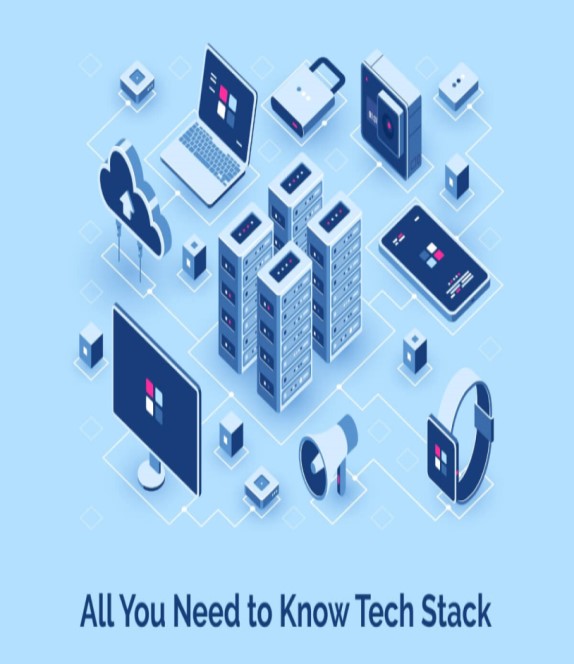
DeepSeek AI: The Open-Source Powerhouse Taking on ChatGPT & Gemini
DeepSeek AI: A Comprehensive Guide to Open-Source Intelligence
Artificial Intelligence (AI) is no longer science fiction—it's transforming industries, automating tasks, and enhancing human creativity. Among the latest advancements is DeepSeek AI, an open-source model competing with giants like ChatGPT and Gemini.

In this guide, we'll explore:

- ✔ What AI is and its evolution
- ✔ How AI models are built
- ✔ DeepSeek's architecture and capabilities
- ✔ Real-world applications
- ✔ Pros, cons, and comparisons
- ✔ The future of AI & how developers can leverage it
1. What is AI? A Brief History
Definition of AI
AI (Artificial Intelligence) refers to machines designed to mimic human intelligence—learning, reasoning, problem-solving, and decision-making.

History of AI (Timeline)
| Year | Milestone | Example |
|---|---|---|
| 1950 | Alan Turing proposes the Turing Test | Early concept of machine intelligence |
| 1956 | Dartmouth Conference – AI coined as a field | Birth of AI research |
| 1997 | IBM's Deep Blue beats chess champion Kasparov | First AI to defeat a world champion |
| 2011 | Siri (Apple) introduces voice assistants | AI enters daily life |
| 2017 | Transformers introduced (Google's "Attention is All You Need") | Revolutionized AI with self-learning |
| 2022 | ChatGPT released by OpenAI | AI becomes mainstream |
| 2024 | DeepSeek AI emerges as a powerful open alternative | Open-source AI gains traction |
🧠 1950 → 🎓 1956 → ♟️ 1997 → 🗣️ 2011 → ⚡ 2017 → 🤖 2022 → 🚀 2024

(Example: AI has evolved from simple rule-based systems to self-learning neural networks.)
2. AI Model Architectures: How Are They Built?
Different AI models use varying architectures. Here are the key types:
a) Rule-Based Systems
- Follows predefined rules (e.g., early chatbots like ELIZA).
- Limitation: Cannot learn or adapt.
b) Machine Learning (ML)
- Learns from data patterns (e.g., spam filters).
- Types:
- Supervised Learning (labeled data, e.g., image recognition).
- Unsupervised Learning (finds hidden patterns, e.g., customer segmentation).

c) Deep Learning (Neural Networks)
- Uses multi-layered artificial neurons (inspired by the human brain).
- Types:
- CNNs (Convolutional Neural Networks) – For image processing (e.g., facial recognition).
- RNNs (Recurrent Neural Networks) – For sequential data (e.g., speech recognition).
- Transformers – The most advanced, used in ChatGPT, DeepSeek, and Gemini.
3. DeepSeek's Architecture: How It Works
DeepSeek is built on a Transformer-based architecture, optimized for long-context understanding.

Key Components:
1. Input Layer
- Text is split into tokens (words/subwords).
2. Embedding Layer
- Converts words into numerical vectors.
3. Transformer Blocks
- Uses self-attention mechanisms to weigh word importance.
4. 128K Context Window
- Retains long-term memory (unlike older models).
5. Output Layer
- Generates human-like text.

(Flowchart: Text → Tokenization → Attention Processing → Output Generation)
🔄 Model Workflow
- Tokenization: Input text is divided into tokens.
- Embedding: Tokens are transformed into embeddings.
- Attention Mechanism: MLA processes embeddings to capture contextual relationships.
- Expert Routing: DeepSeek MoE routes tokens to specialized experts.
- Context Processing: Utilizes the 128K context window to maintain long-term dependencies.
- Text Generation: The output layer generates coherent and contextually relevant text.
[Input Text]
↓
[Tokenization] → "Deep" "Seek" "AI"
↓
[Embedding Layer] → Numerical Vectors (512-dim)
↓
[Transformer Block] → Self-Attention → Feed Forward
↓
[Output Text] → "DeepSeek is an open-source AI..."
🧪 Performance Highlights
- Context Length: Supports up to 128,000 tokens.
- Parameter Efficiency: Activates only 21 billion parameters per token, optimizing computational resources.
- Training Efficiency: Achieves a 42.5% reduction in training costs compared to its predecessor.
- Inference Speed: Increases generation throughput by 5.76 times.
- KV Cache Optimization: Reduces Key-Value cache requirements by 93.3%.
4. How Can DeepSeek Be Used?
DeepSeek has two primary modes:
a) Chat Mode (For Everyone)
- Free access at chat.deepseek.com.
Features
- Answer Questions: Engage in natural language conversations to get answers to various queries.
- Debug Code: Provide code snippets to receive debugging assistance
- Summarize Documents: Upload or paste documents to receive concise summaries
b) API Mode (For Developers)
- Integrate DeepSeek into apps (e.g., chatbots, coding assistants).
- Example:
import deepseek
response = deepseek.generate("Explain quantum computing simply.")
API Flow:
- Obtain API Key: Sign up on the DeepSeek platform and generate an API key.
- Set Up Authentication: Use the API key for Bearer authentication in your requests.
- Send Request: Make a POST request to https://api.deepseek.com/chat/completions with the necessary headers and payload.
- Receive Response: Process the response containing the generated text.
API Documentation: For detailed information on API usage, refer to the DeepSeek API Docs.
5. Real-World Applications (With Examples)
Table 2: Real-World Applications of DeepSeek AI
| Industry | Use Case | Example |
|---|---|---|
| Education 📖 | Instant tutoring | "Explain calculus to a 10-year-old." |
| Healthcare 🏥 | Medical report summaries | "Summarize this patient's MRI findings." |
| Legal 📑 | Contract review | "Highlight risks in this 100-page agreement." |
| Programming🧑💻 | Auto-code generation | "Write a Python script for web scraping." |
| Marketing 🔊 | Ad copywriting | "Generate a tweet for our AI product launch." |
6. Pros & Cons of DeepSeek
Table 3: Pros and Cons of DeepSeek AI
| Pros | Cons |
|---|---|
| ✅ Free & open-source | ❌ Requires tech skills for API use |
| ✅ 128K long-context memory | ❌ Not as polished as GPT-4 for chat |
| ✅ Strong in coding & math | ❌ Limited multimodal (no images/audio yet) |
| ✅ Self-hostable | ❌ No memory between chats |
7. DeepSeek vs. Other AI Models (2024 Comparison)
Table 4: DeepSeek vs GPT-4, Gemini, Claude
| Model | Context | Open? | Coding | Cost |
|---|---|---|---|---|
| DeepSeek-V3 | 128K | ✅ Yes | ⭐⭐⭐⭐ | Free |
| GPT-4 Turbo | 128K | ❌ No | ⭐⭐⭐⭐ | $20/month |
| Gemini 1.5 | 1M+ | ❌ No | ⭐⭐⭐ | Freemium |
| Claude 3 | 200K | ❌ No | ⭐⭐⭐ | Paid |
Verdict:
- Best for developers: DeepSeek (free & customizable).
- Best for casual users: GPT-4 (smoother chat).
8. The Future of DeepSeek & AI
Short-Term (2025-2027)
- Multimodal AI (image + text understanding).
- Hyper-personalization (learns user preferences).
Long-Term (2030+)
- AI Agents (autonomous assistants).
- AGI? (human-like reasoning).
My Thoughts:
"Open models like DeepSeek will dominate, but ethical guidelines are crucial."
9. How Developers Should Use AI (Assistance, Not Replacement)
✅ Use AI for:
- Debugging help (e.g., "Fix this Python error.")
- Documentation summaries (e.g., "Explain React hooks briefly.")
❌ Don't use AI for:
- Critical decision-making (AI can hallucinate).
- Replacing human creativity (AI lacks true innovation).
Tip: "AI is a tool—like a supercharged calculator, not a replacement for thinking."
What's next?
- Try DeepSeek Chat.
- Experiment with the API for custom projects.
- Stay updated—AI evolves daily!
What's your take on open-source AI? Let's discuss in the comments! 🚀






